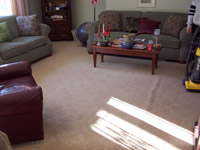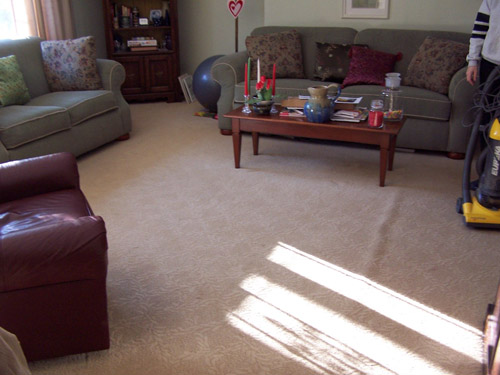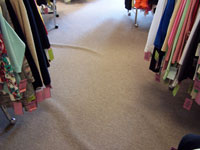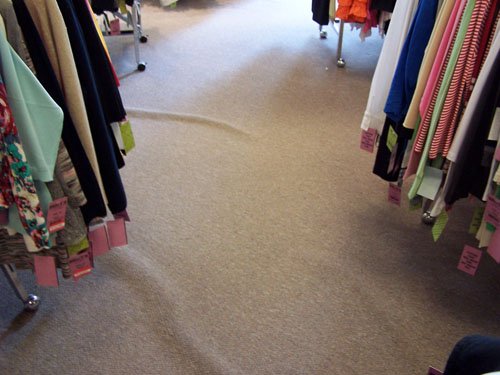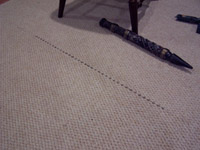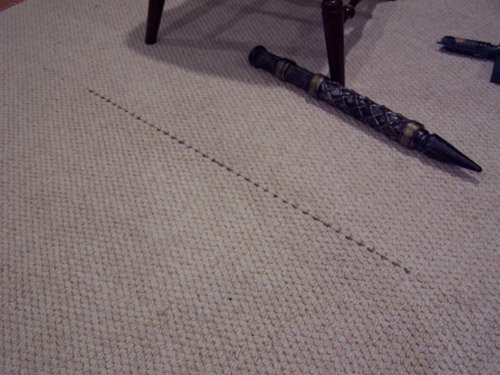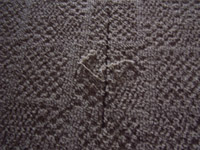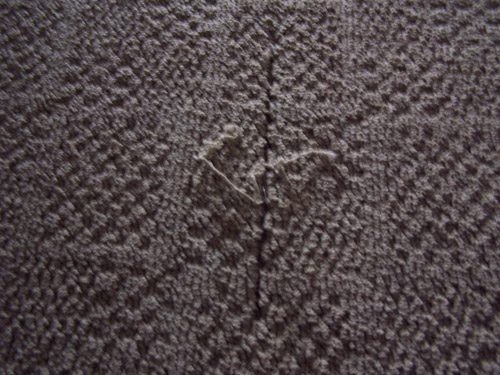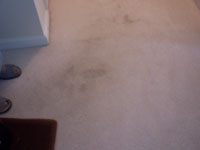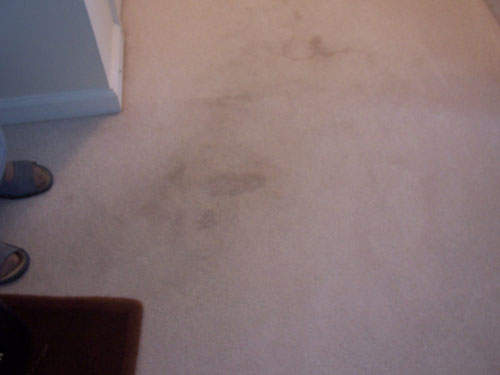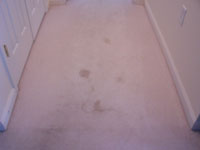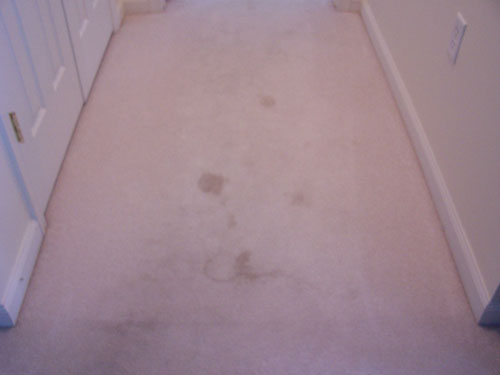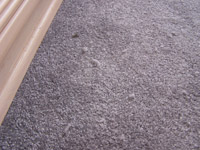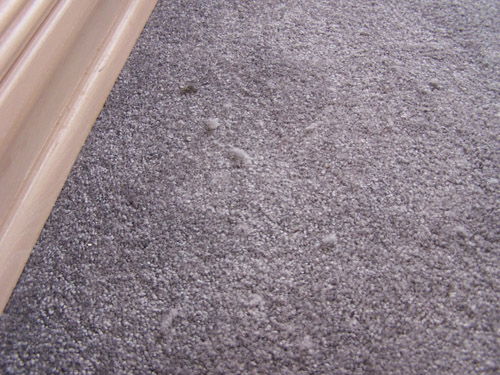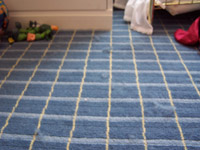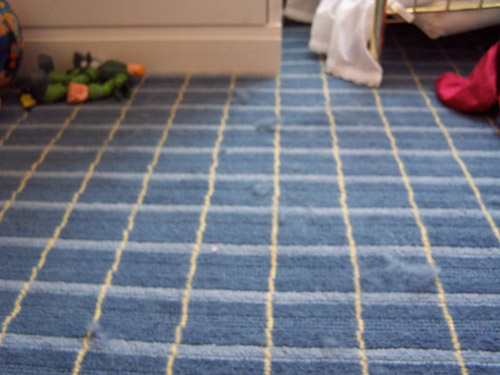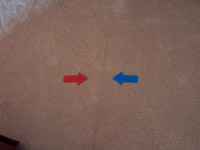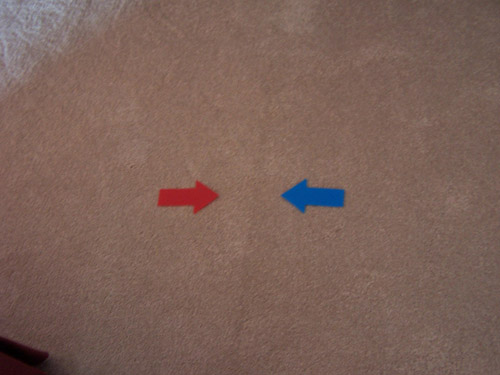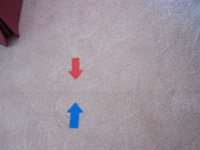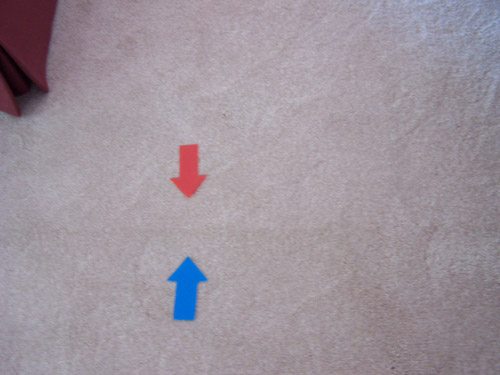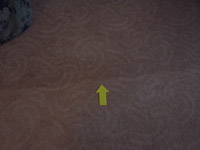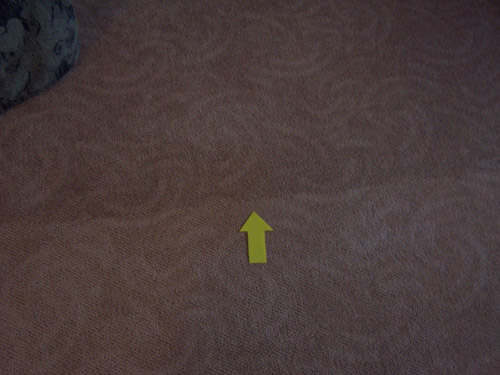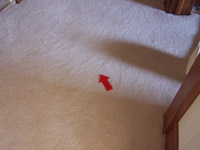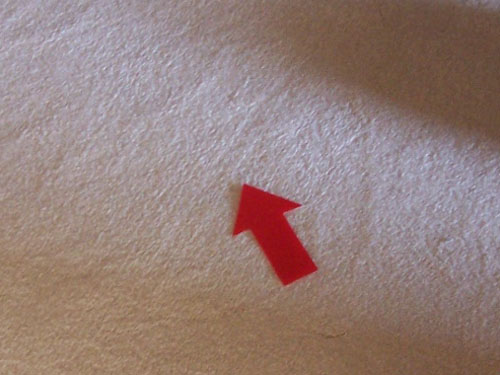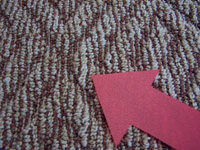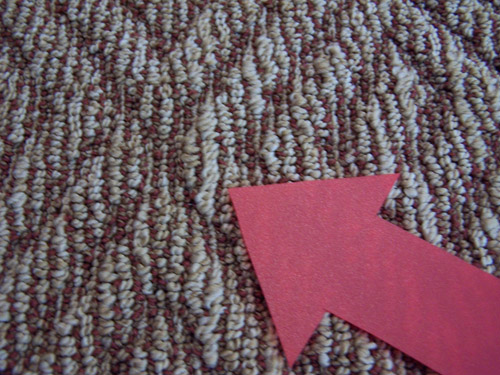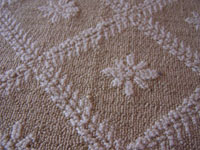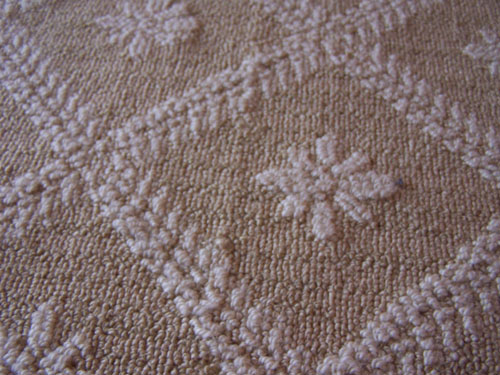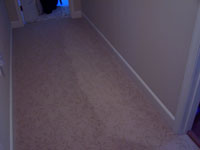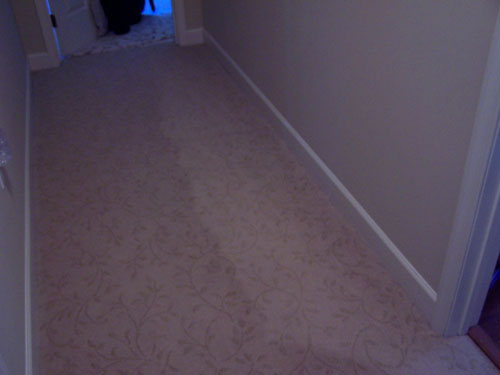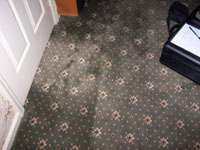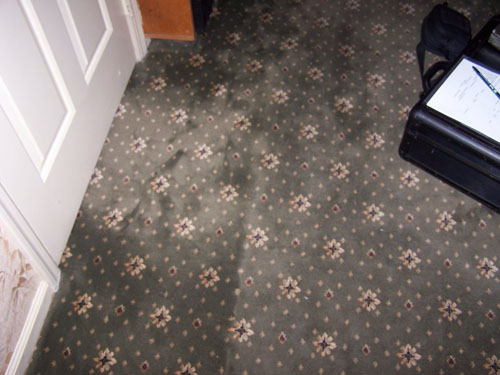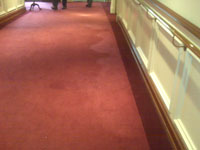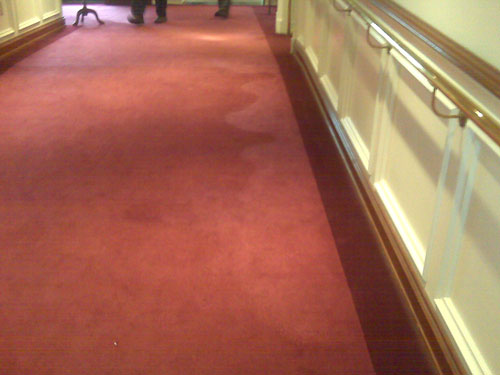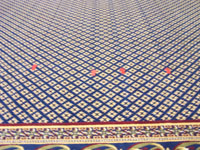
Common Floor Problems Explained...
Carpet | Hardwood | Laminate | Ceramic Tile | Vinyl Tile | Linoelum
Carpet...
There are countless floor covering issues that may require the need for a certified professional inspector. Most issues can have multiple causes requiring an expert in the field with the ability, when possible, to assign blame to the correct party. The most common issues are listed below.
Wrinkling or buckling
This condition can appear anytime after installation. Causes can be:
- A manufacturing issue
- A site related issue due to consumers rolling or dragging heavy objects across the floor
- The most common is an installation related issue due to improper stretching.
Rollover Images for larger view:
Zippering or unraveling
This can also present itself as a single loop or strand of yarn standing above the normal carpet height or long continuous rows running along a seam or in the middle of a room. This condition can be:
- A manufacturing issue caused by the lack of latex
- A consumer related issue caused by dragging heavy objects
- Animals clawing at the carpet
- Installation errors such as lack of seam sealer at seams during installation may also cause zippering.
Rollover Images for larger view:
Soiling or staining
Most carpet made today has some sort of stain protector. It is a misconception that carpet with a stain protector will not soil. Stain protectors seal the surface of the yarn so soiling can be removed with professional cleaning. No carpet manufacturer will honor a soiling complaint unless the carpet has been professionally cleaned and the stains cannot be removed.
Rollover Images for larger view:
Shedding
Shedding is loose fiber coming from the carpet most commonly seen in the vacuum bag or clear canister of bag less vacuums. Shedding is a natural characteristic of staple yarn. It is intended to appear and react like wool carpeting. Shedding is rarely considered a manufacturing issue. The most common cause of shedding is:
- Due to lack of sufficient vacuuming or a vacuum with no beater brush. Normal vacuuming is considered to be two to three times per week. With this amount of vacuuming shedding can continue up to six months or more.
Rollover Images for larger view:
Side match color variation
After installing a new carpet it may appear that the carpet is two different colors along the seam. This is usually a manufacturing issue. During manufacture slight shading is possible which becomes noticeable along a seam. Slight variation in texture will also cause the carpet to look two different shades. These conditions are most commonly a manufacturing issue but in some cases are due to an installation error.
Rollover Images for larger view:
High or Low Rows
High or low rows will run the length or width of carpet. This condition is almost always a manufacturing issue. On rare occasions it may be an installation related claim.
Rollover Images for larger view:
Pooling - Watermarking - Pile Reversing
Pooling is a condition that causes carpeting to appear to be two different shades. In this case one area will look lighter than the other when viewed from one direction. When viewed from the opposite side the colors will reverse and the dark side will appear lighter. Pooling can appear immediately or take six months, one year, or even longer to appear. The cause of watermarking is unknown and not considered a manufacturing issue.
Rollover Images for larger view:
Corn-Rowing
Corn-rowing is a term to describe matting in shags and plush pile carpet. This condition causes some of the rows of carpet to mat and alternating rows to stand straight. The resulting appearance is that of rows of corn. The matting usually forms rows usually across the width of the traffic.
Lines in Carpet
Lines in carpet running in the length or width of carpet are almost always a manufacturing issue. Any lines that run on angles or diagonal to the length and width will never be caused by manufacture. The most common lines are caused by high rows, low rows, or a strand of foreign yarn causing a different shade.
Rollover Images for larger view:
Carpet Odors
The large majority of all carpet produced today is synthetic, nylon, polyester, or olefin. Synthetic carpet does not give off any lasting odor. All synthetics are non allergenic. Natural fibers such as wool or silk and jute pad can cause allergic reactions. Natural fibers can also cause mildew odors and installation should be avoided on concrete floors or below grade. Manufacturers will not honor odor or allergy claims on carpet made from synthetic fiber. All backing products used in synthetic carpet are polypropylene (olefin).
